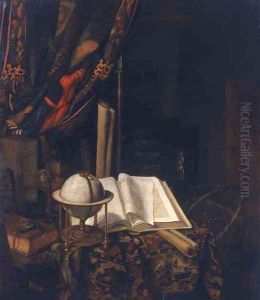Jacob van der Heyden Paintings
Jacob van der Heyden was a notable Flemish Baroque painter, printmaker, and publisher, born in Antwerp in 1573. His work and contributions to the art world span the late 16th and early 17th centuries, a period rich in artistic innovation and cultural change in Europe. Van der Heyden's artistry was not confined to a single medium; he was adept in engraving, etching, and painting, showcasing a versatile talent that was well-regarded by his contemporaries.
Jacob's early life was steeped in the vibrant artistic environment of Antwerp, a city that was a key center for the arts in the Netherlands during the Baroque period. Though specific details about his education and training are sparse, it is believed that he was apprenticed to a master in the city, which was common practice at the time. This apprenticeship would have provided him with a solid foundation in the techniques and styles that characterized Flemish art during this era.
Van der Heyden's work is particularly noted for its detailed engravings and etchings. He was a master of depicting landscapes, architectural scenes, and allegorical themes with a high degree of precision and attention to detail. His prints often featured complex, intricate designs that demonstrated not only his skill as an artist but also his deep understanding of the subjects he portrayed. This ability made his works highly sought after by collectors and art enthusiasts of his time.
In addition to his artistic pursuits, Jacob van der Heyden was also an innovator in the field of printmaking. He experimented with various techniques, contributing to the development of the medium in Northern Europe. His work as a publisher further amplified his impact on the art world, as he produced and distributed prints by various artists, helping to disseminate the Baroque style across Europe.
Despite his contributions and the quality of his work, Jacob van der Heyden is not as widely recognized today as some of his contemporaries. However, his engravings and paintings continue to be appreciated by art historians and collectors for their beauty and technical excellence. Van der Heyden's legacy is that of an artist who was deeply engaged with the visual and cultural complexities of his time, capturing the spirit of the Baroque era through his diverse and intricate works. He passed away in Strasbourg in 1645, leaving behind a body of work that continues to be studied and admired for its artistic merit and historical significance.


